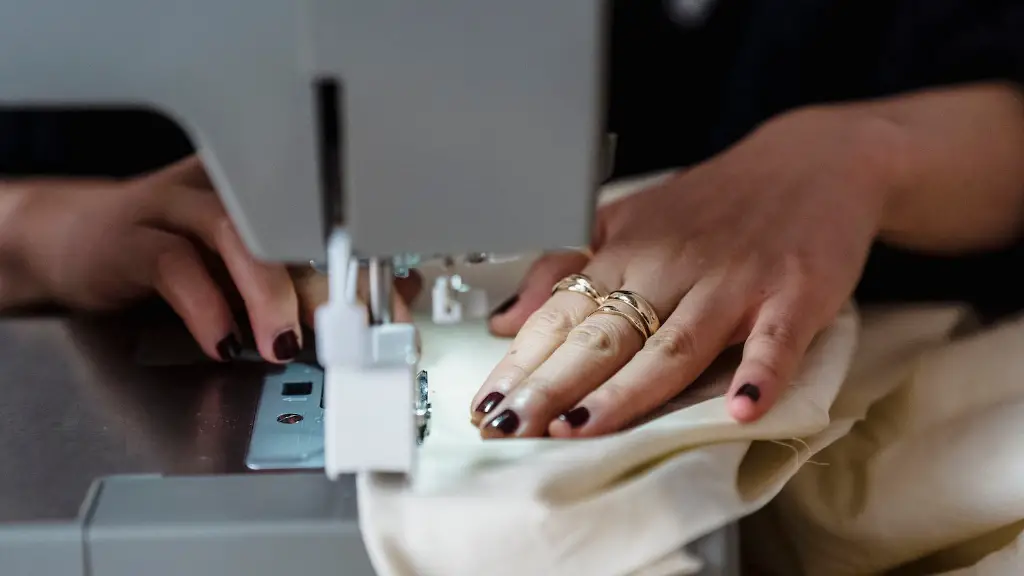Sewing machines have been a part of the fashion industry for centuries, and their care is an important factor in keeping them in good working order. Greasing a sewing machine may seem easy, but there are many steps that must be taken to ensure that it is done properly and safely. This article will provide an overview of the process, dive deeper into the various components, and give examples to help illustrate how to grease a sewing machine.
The first step in greasing a sewing machine is to identify the areas that require lubrication. It is important to locate the oil ports and find the appropriate lubricants for the specific machine. The owner’s manual will typically provide details on the required lubricants and their location. Taking off the casing is necessary to access the various components that require grease or oil. It is important to be careful to not damage the inner parts while taking off the casing.
The primary lubrication points are typically the top feed, underside feed, needle, upper tension, and bobbin tension. After fishing out the oil ports, the machine should be turned both on and off and oil should be applied to all five areas. Depending on the machine, it is recommended to use a light-weight oil such as sewing machine oil, or a non-toxic mineral oil is sufficient. The oil should also be used judiciously, as too much oil can cause build-up, affecting the performance of the machine.
After greasing the machine, check for any sticky or worn out parts and replace them before continuing the operation. Inspect the upper tensioner to make sure it is functioning properly and make necessary adjustments if needed. It is important to lubricate the shuttle race, clutch mechanism, needle bar, and other moving components accurately for optimal performance.
In order to ensure that the machine is greased correctly, it is important to conduct regular maintenance and inspections. Inspecting for any frayed or worn out threads, oil leaks, and loose buttons alongside the occasional greasing may be necessary to keep the machine in good working condition. Replace all parts that are deteriorated, as they can cause problems with the performance of the machine. Lastly, make sure to clean the machine after greasing it to prevent dust and lint build-up.
Greasing Regularly
Regular greasing of your sewing machine is important in order to keep it running in optimal condition. Lack of lubrication can cause the machine to work less efficiently, leading to slower sewing speeds, or cause the machine to overheat due to the heat generated during operation. Greasing too often is also a problem, as excess oil can build up and damage the parts, leading to costly repairs. The best way to ensure optimal lubrication for the machine is to grease it after every 500 hours of sewing.
Additional Tools and Products
Aside from the oil needed for greasing, there are other tools and products that may be needed based on the type of machine. Sewing machine oil is usually required for any machine, but other products and tools such as sewing machine grease, grease guns, and grease needles are often necessary for specialty and large machines. Always consult the owner’s manual for the correct products for your machine.
Safety Considerations
Before starting the process it is important to take all the necessary safety precautions. Make sure that the machine is turned off and unplugged from the power source. Wear protective gear when handling sharp objects or oil to avoid cuts or spills. It is also important to read the safety warnings included in the manual and follow the manufacturer’s instructions to avoid any potential harm.
Advanced Greasing
For those machines that require specialized lubrication, it is important to take extra caution. Some machines require grease, instead of oil, which requires additional tools and an understanding of the machine’s different components. These steps should be taken under an experienced technician, as the potential for mistakes rises with more complex machines.
Greasing Tips
In order to get the best results from the process, it is helpful to keep in mind a few tips when greasing. It is important to note that the lubricant used should be compatible with the machine. Use the lightest oil recommended for the greatest results. Grease should be applied to the parts in thin layers and wiped off the outside of the machine with a clean cloth. Be sure to always use high-quality lubricants and tools to ensure the best results.
Understanding Grease Pressure
In addition to taking precaution when use oil, it is also important to consider grease pressure when lubricating a sewing machine. Even though the primary focus is on the lubrication, pressure is also an important factor to take into account. Too much pressure when greasing can cause components to wear down and damage the machine, while too little pressure can also render the parts less effective. Therefore, it is important to understand the exact pressure required for each component to ensure their proper functioning.
Evaluate Efficiency
Once the greasing is complete, it is important to evaluate the efficiency of the machine. Check for any noise or loose parts, and make sure that the oil is evenly distributed throughout the components. Small issues can be identified and corrected before greasing again, so that the machine is running as effectively and efficiently as possible.



